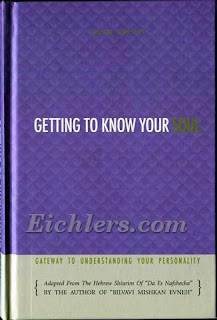 |
| Photo used with permission & text added by me |
Last Shabbos Kodesh I is was learning Bilvavi Mishkan Evneh (vol 2, chapter 6) and Rav Shwartz explains a person who likes a particular food will eat it over and over again, never getting bored of it. Likewise, he says, we might listen to the same song many times, because our neshama “connects to the song.” He brings up the question of why many people don’t experience this when it comes to Avodas Hashem? The answer can be found by checking out the link above to chapter 6, but the idea is that we need open ourselves up to “tasting” the goodness of Hashem. After the initial difficulty of working on this a person will be drawn after this “taste” of Hashem “like iron to a magnet.”
The phrase comes from the second to the last paragraph at the end of the first chapter of Mesillas Yesharim (found in Hebrew or English). The Ramchal says that your every inclination be directed singularly towards our Creator and that all we do be for only one purpose- to draw close to Him and remove all the barriers that block you from your Maker, “until you are actually drawn after Him (may He be Blessed), like iron to a magnet.” You really need to click the link(s) above and see what the Ramchal says inside. My few typed words really don’t give it over properly.
Rabbi Yaakov Feldman beautifully explains the idea of “iron to a magnet” follows in his own translation and commentary on The Path of the Just:
When metal is drawn to a magnet it becomes magnetized; when something is drawn to fire it is destroyed. In both cases, the object drawn in is nullified and changed. But the metal nullified by the magnet benefits from the nullification, while the object nullified by the flame loses all.
So too, when one is drawn towards God, the become Godly. In fact, the faster he holds onto the “magnet,” the better, and the sooner the separation the sooner the loss. But the more one avoids contact with the “flame” (those things that separate us from God) the better off he is. (page 20)








